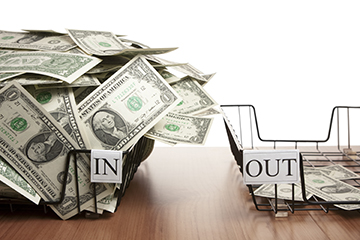Call Don today: 951-533-4966
Blog
Don Welker's Financial Minute

Considering selling your business? The time to start building value is long before you put the company on the market. To position your company so it will sell at the highest price, here are some of the things you should do: Create a 3-to 5-year business plan with projected financials. Include a narrative of what you expect to happen and the resources that will be needed to get there. Be sure your projected cash flow statement ties to your projected income statement and balance sheet.
• Assemble a strong management team. What I often see in small businesses is that the owner or CEO is the “face” of the company and, in effect, its only intangible asset. To sell the company you need to have a strong management team in place that customers and vendors are comfortable doing business with.
Give your managers authority to make decisions, and ensure that customers, vendors and other outsiders have a chance to get to know them. Help your managers develop strong reputations within your industry, such as by joining and participating in your trade association.
• Acquire strong vendor contracts. This is especially important if you’re a reseller. Can you get advantageous pricing and/or terms? Would they be willing to grant territorial exclusivity?
• Create 5 years of adjusted historical financial records. Start by identifying any unusual or non-recurring expenses that can be added back in. The goal is to show what the trues results of operation would have been if the company had been run “by the books” and didn’t have these unusual transactions.
For example, if you own both the company and the facility in which it operates, and you have a sweetheart rental agreement that gives you above-market rents, you should adjust the records as though only market rate was paid. Or if you’ve been paying high salaries to family members who aren’t really providing services, adjust the records to remove them from the payroll.
One thing to keep in mind here is that a business’ selling price is often determined by a multiple of expected cash flow. Pay close attention to this, and look at steps you can take now to increase your cash position .
Don’t wait until you have an interested potential buyer to start getting your ducks in a row. And if you need help with any of this, give me a call. As your part-time CFO, I’m here for you.

Running into cash flow problems? Here are six steps you can take to increase your cash position:
1. Speed up collections. Take a close look at your accounts receivable aging report. Identify the slow pay customers and come up with a plan to address them. Perhaps you haven’t been speaking to the right person, or your senior management needs to get involved by called their senior management.
If you can afford it, consider offering customers discounts for early pay. While I don’t generally recommend this, sometimes it’s warranted if your margins are high enough.
Of course, the fastest but most expensive way to speed up collections is to factor your invoices. If you can afford it, this is always an option.
2. Increase inventory turns. Review your product line by item to get a good understanding of your sales by month, quarter and year. Take a look at your vendor’s minimum order sizes and the delivery lead time for each item. Based on all this data, take steps to ensure you don’t carry excess inventory.
In addition, have a plan to get rid of slow moving or soon-to-be-obsolete items, and insist on having firm order commitments before granting sales people’s requests to bring new products into your inventory.
3. Reduce your investment in fixed assets. Review your utilization of existing fixed assets. Are there things that you’re not really using that you could sell to generate some cash? For example, say you’re a grading contractor. You have heavy equipment and a fleet of pickup trucks. Business has dropped 30%. You’ve already reduced your staff. Do you hang onto all that idle equipment for when business turns back around, or bite the bullet and liquidate it?
4. Negotiate payment terms that match your cash flow cycle. If it typically takes 120 days from the time you purchase raw materials or inventory items to the time you collect payment from your customers, but your vendor expects payments in 30 days, your cash flow will quickly get out of whack. Talk to your vendor, and see what kind of terms they can provide.
5. Obtain a working capital line of credit. While there’s a cost associated with this, a line of credit provides an immediate improvement in your cash position.
6. Develop and adhere to an honest operating budget. Resist the urge to splurge on ego-related items such as an expensive company car, or to run personal expenses through the company account.
In addition, I recommend that you avoid having an “always buy” mindset when investing in fixed assets. Sometimes leasing is best.
Need help with any of this? Give me a call! As your on-call CFO, I’m here for you.